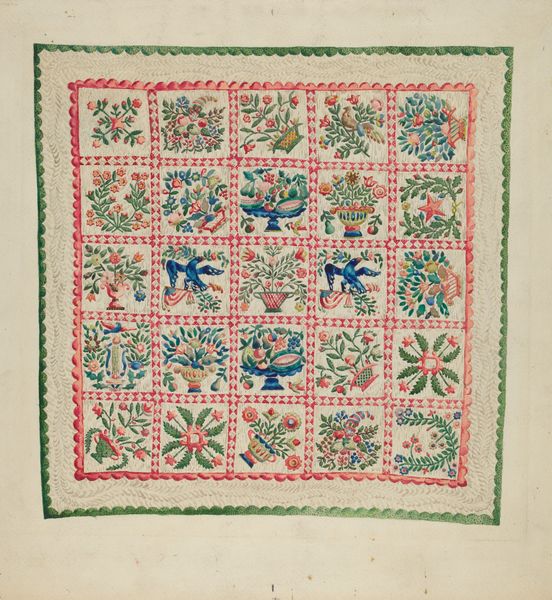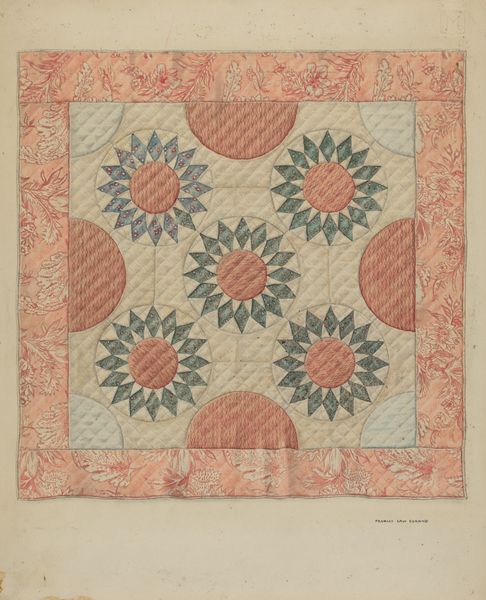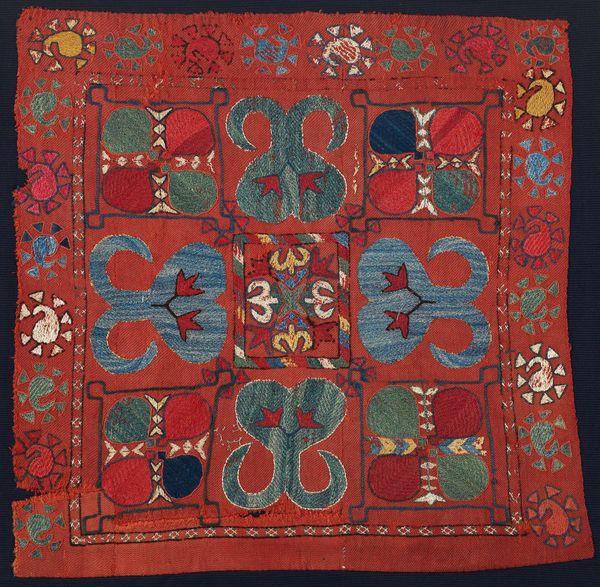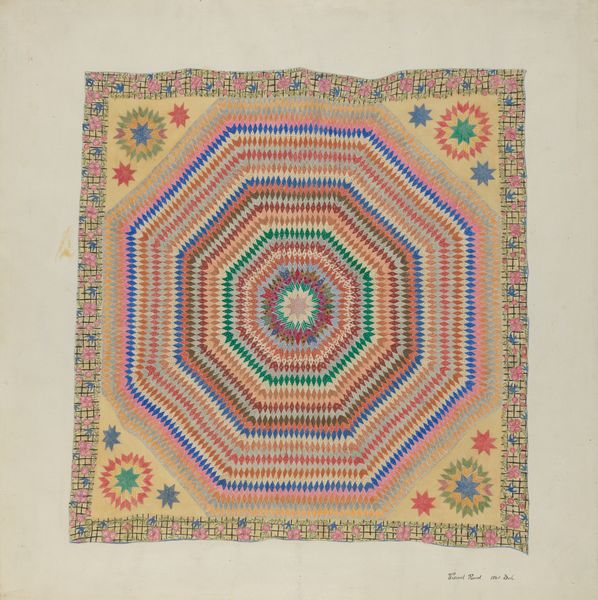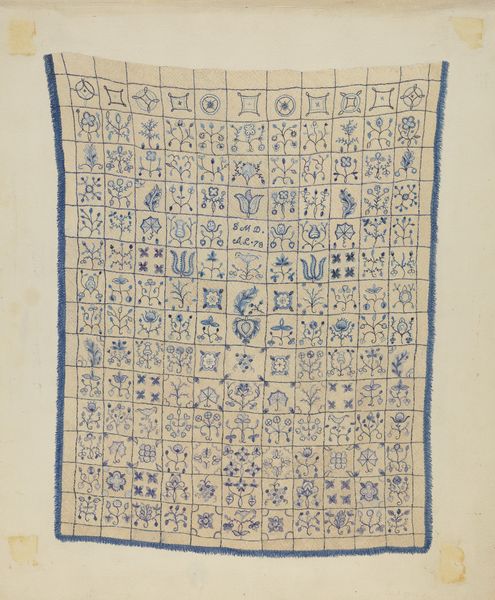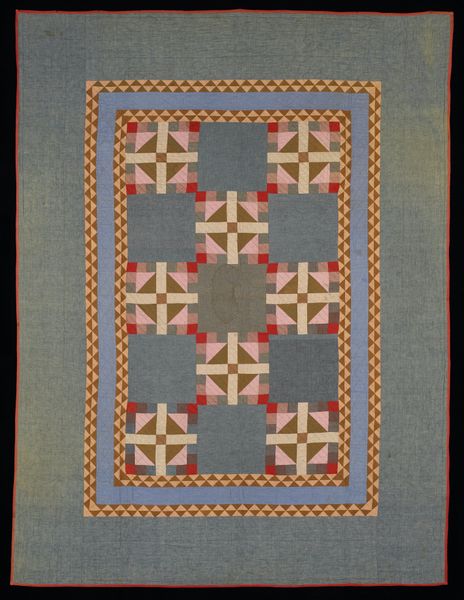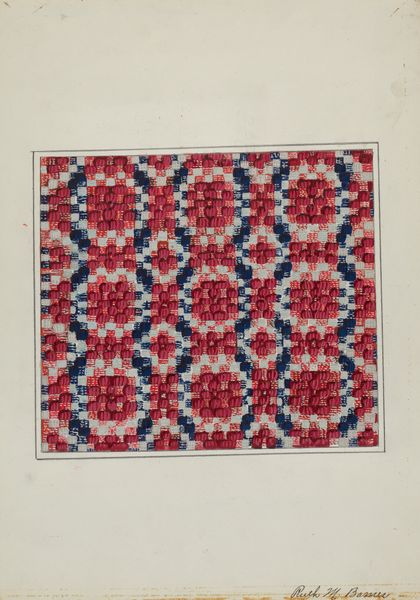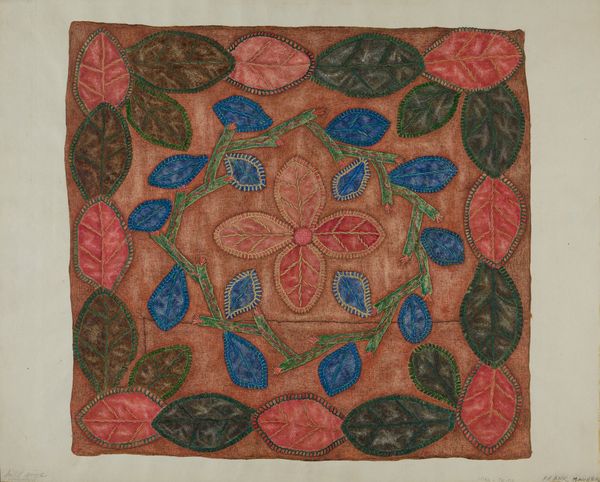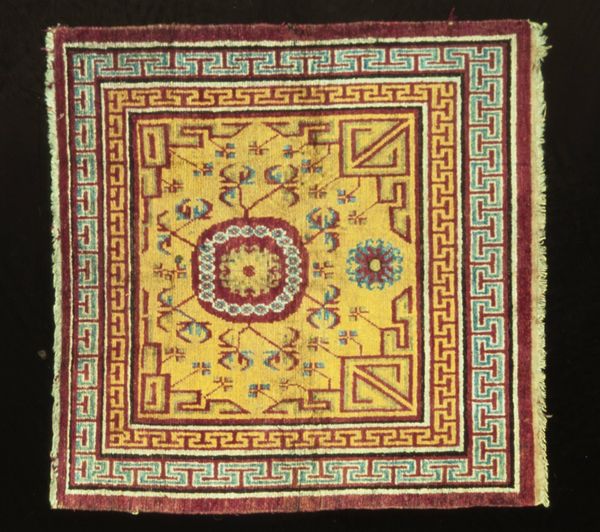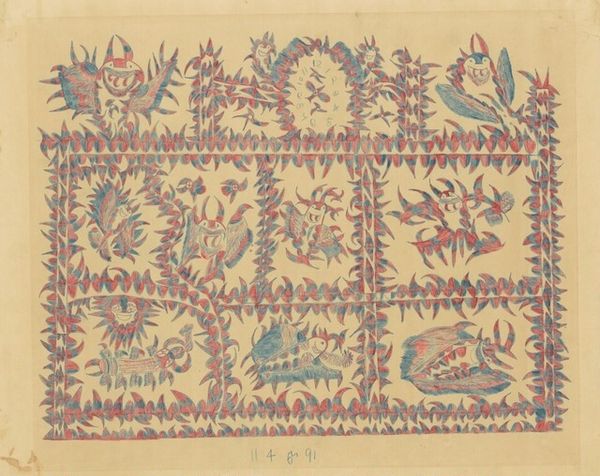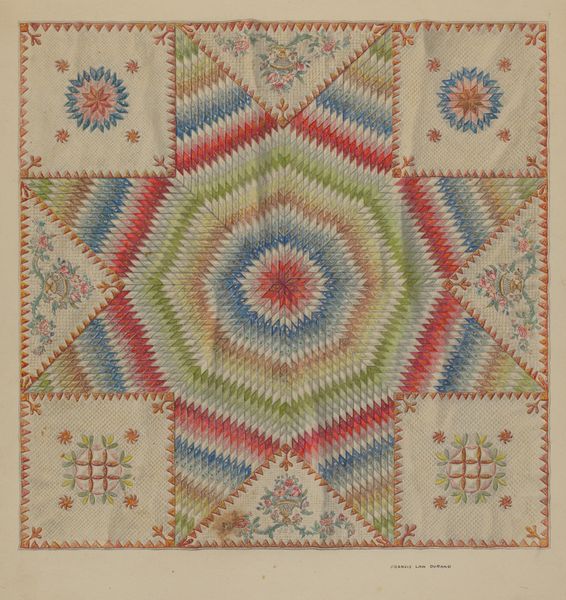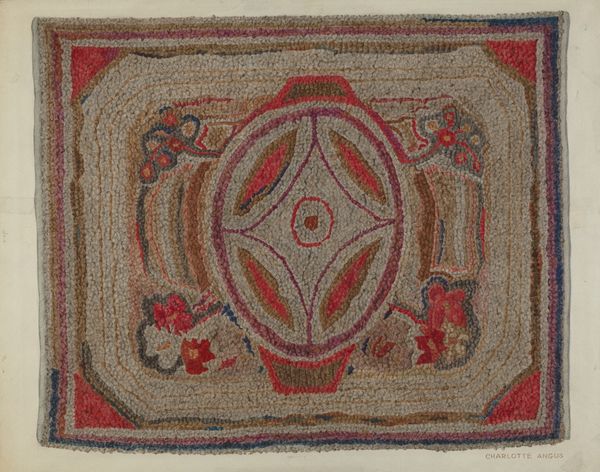
textile
#
textile
#
watercolor
Dimensions: overall: 29.1 x 22 cm (11 7/16 x 8 11/16 in.) Original IAD Object: 76" square
Copyright: National Gallery of Art: CC0 1.0
Editor: This is Arlene Perkins's "Coverlet," made between 1935 and 1942. It's a watercolor drawing of a textile, showcasing a quilt design with floral basket motifs. It has a real sense of warmth, of domesticity, somehow. What symbolic reading would you give it? Curator: Baskets themselves are ancient symbols of nurturing, harvest, and domesticity – holding the fruits of our labor, so to speak. These baskets, however, are all slightly different, which begs the question: what individual offerings do they contain? Editor: So the variety is important? It feels quite uniform at first glance. Curator: Consider the historical context. Made during the Depression era, quilts often represented thrift and resourcefulness, but more importantly, community. Even alone, someone creating this—or rendering it in watercolor, like here—engages with the memory and tradition of communal creation. Do the slightly varied flora perhaps symbolize individuality blossoming within community? Editor: That's a compelling idea. The different flowers might speak to individual skills and contributions within a shared heritage. It’s like a family album. Curator: Exactly. And the act of rendering a textile design in watercolor transforms a functional object into something purely aesthetic, almost reverential. Does this perhaps elevate the cultural significance of folk art and domestic craft? Editor: It definitely makes me consider the layers of meaning embedded within seemingly simple designs. I see much more than a pretty quilt now. Curator: And it reveals the enduring power of symbols, connecting us to cultural memory.
Comments
No comments
Be the first to comment and join the conversation on the ultimate creative platform.
